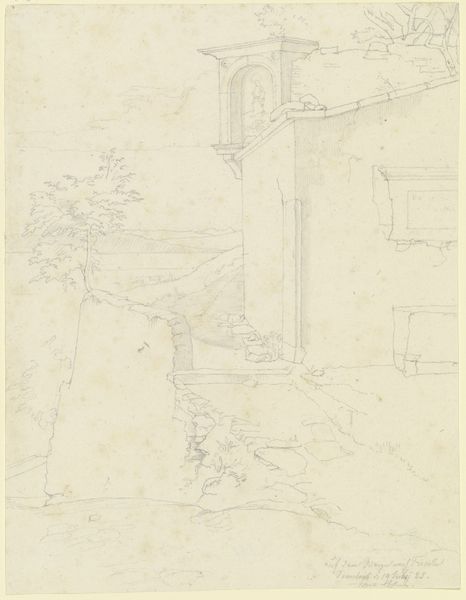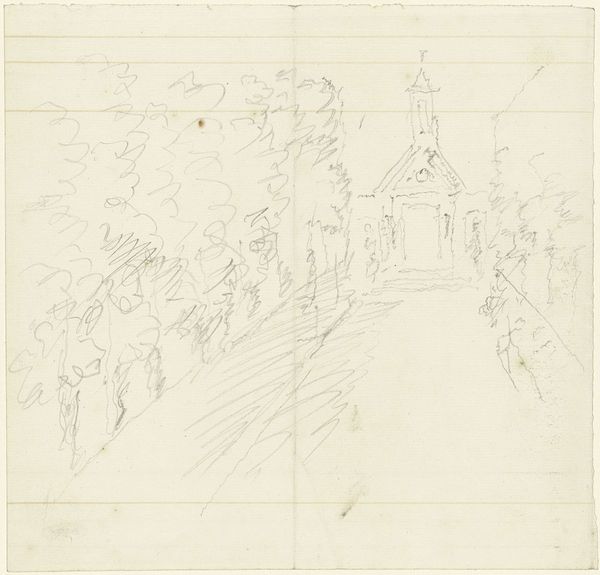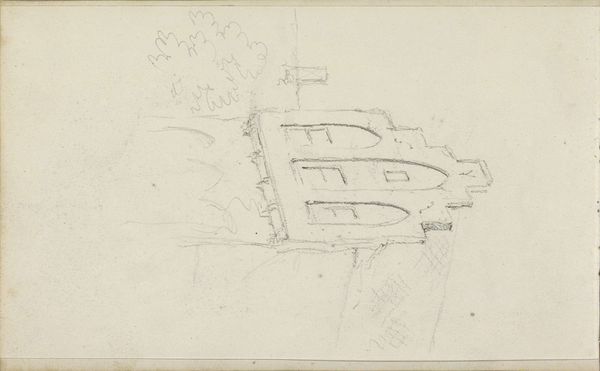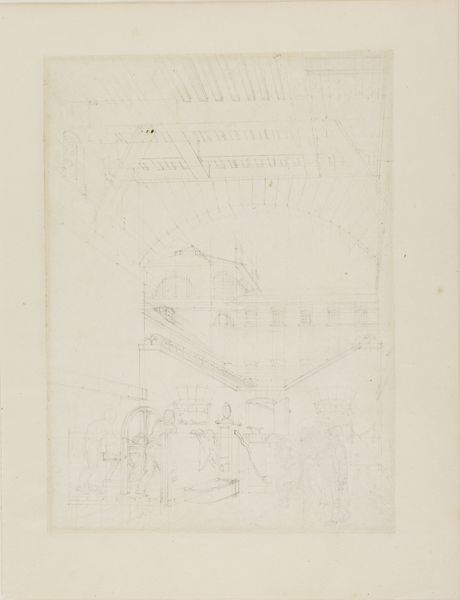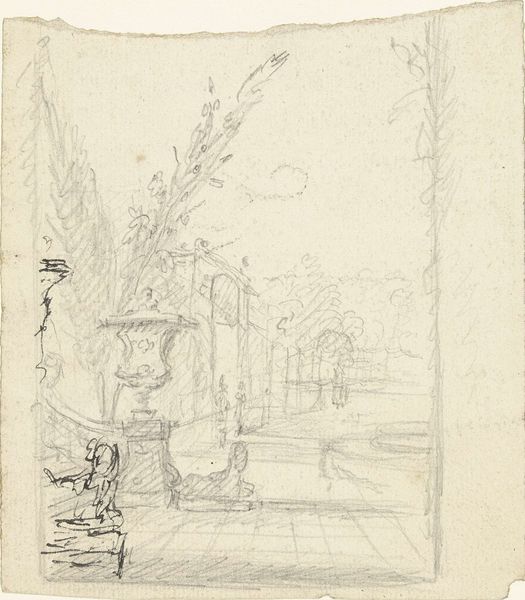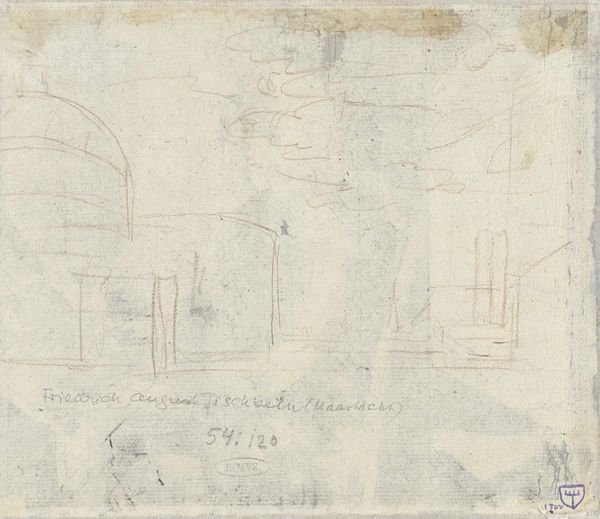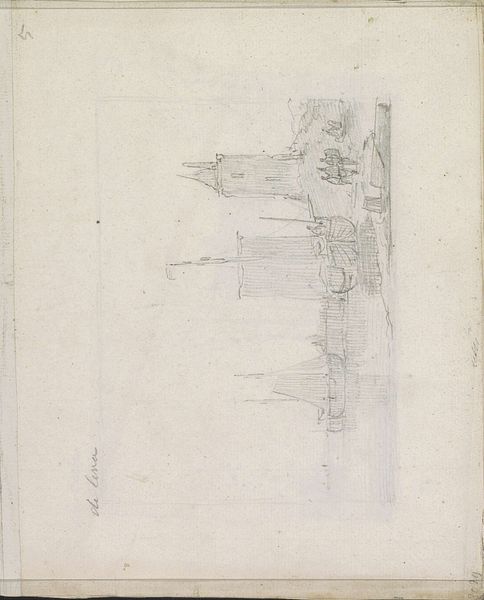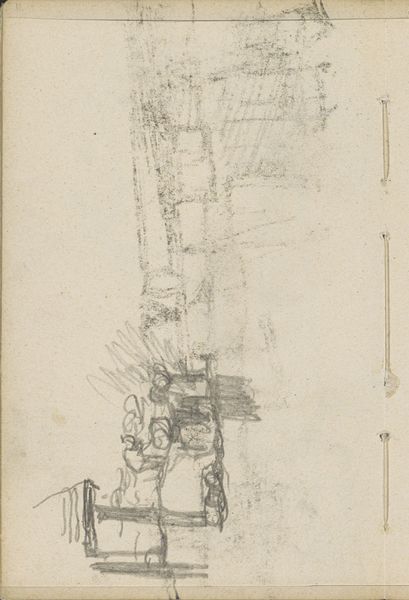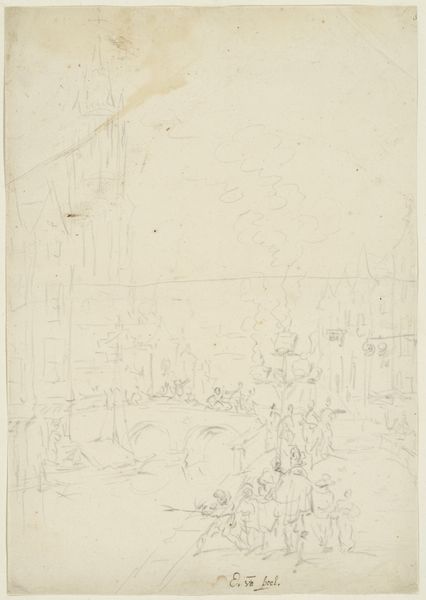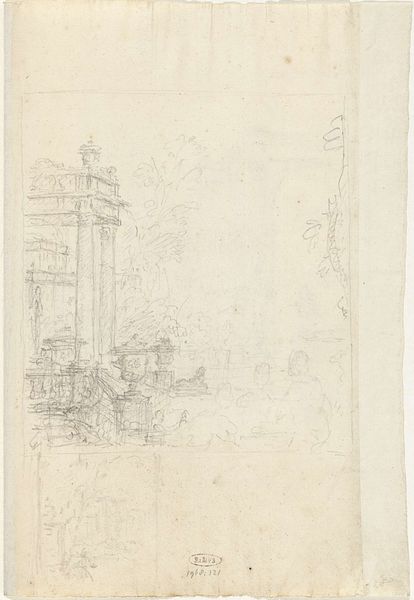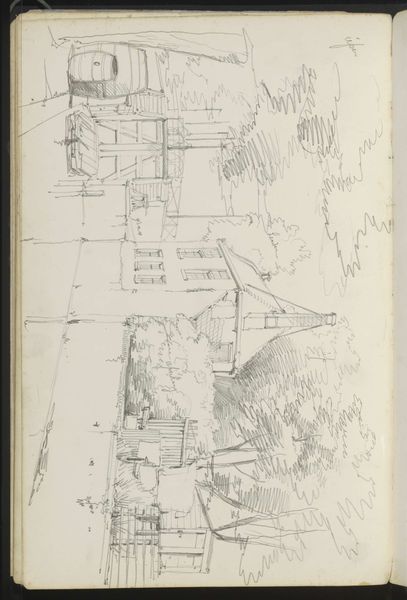
Ontwerp voor een kamerbeschildering: perspectiefschets van een tuin 1715 - 1798
0:00
0:00
drawing, paper, pencil
#
drawing
#
amateur sketch
#
aged paper
#
light pencil work
#
quirky sketch
#
sketch book
#
incomplete sketchy
#
landscape
#
perspective
#
paper
#
personal sketchbook
#
sketchwork
#
pencil
#
line
#
sketchbook drawing
#
sketchbook art
#
rococo
Dimensions: height 420 mm, width 330 mm
Copyright: Rijks Museum: Open Domain
Dionys van Nijmegen sketched this garden perspective with graphite, capturing an idealized vision of nature and space. The fountain stands as a central motif, evoking the Roman nymphaeum, a structure dedicated to water nymphs. Across time, we find variations of this motif – from the elaborate fountains of the Renaissance to the simple wells in ancient courtyards. Each reflects a culture's deep connection to water as a source of life and purification. The ordered symmetry and linear perspective create an illusion of infinite space, a concept often explored in both garden design and Renaissance painting. This desire to control and frame nature resonates with humanity's perennial quest to understand and tame the chaos of the world. The garden then is more than just a space; it is a stage where human desire and the natural world meet, perpetually influencing our perceptions and shaping our cultural memory.
Comments
No comments
Be the first to comment and join the conversation on the ultimate creative platform.


